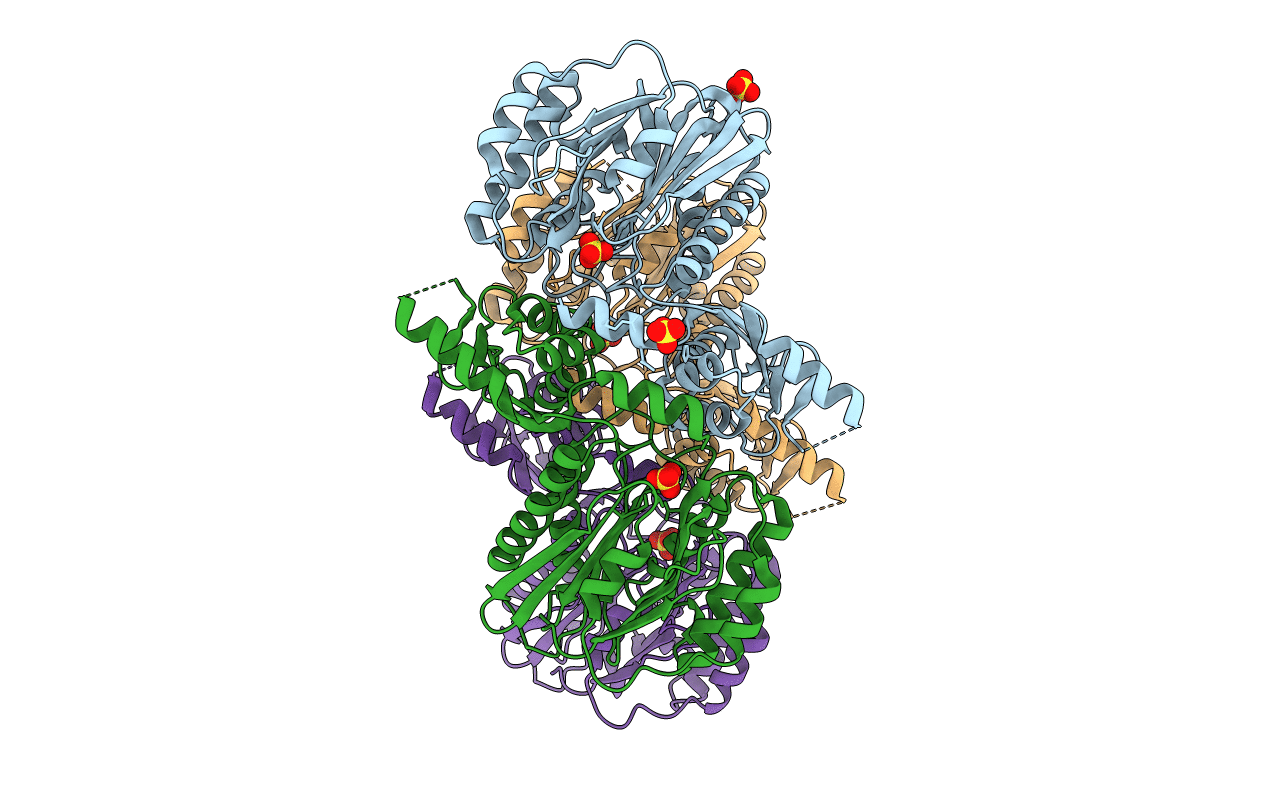
Deposition Date
2004-05-14
Release Date
2004-09-16
Last Version Date
2024-11-06
Entry Detail
PDB ID:
1VZ8
Keywords:
Title:
Ornithine Acetyltransferase (ORF6 Gene Product - Clavulanic Acid Biosynthesis) from Streptomyces clavuligerus (SeMet structure)
Biological Source:
Source Organism:
STREPTOMYCES CLAVULIGERUS (Taxon ID: 1901)
Host Organism:
Method Details:
Experimental Method:
Resolution:
2.75 Å
R-Value Free:
0.28
R-Value Work:
0.23
R-Value Observed:
0.23
Space Group:
P 1 21 1


